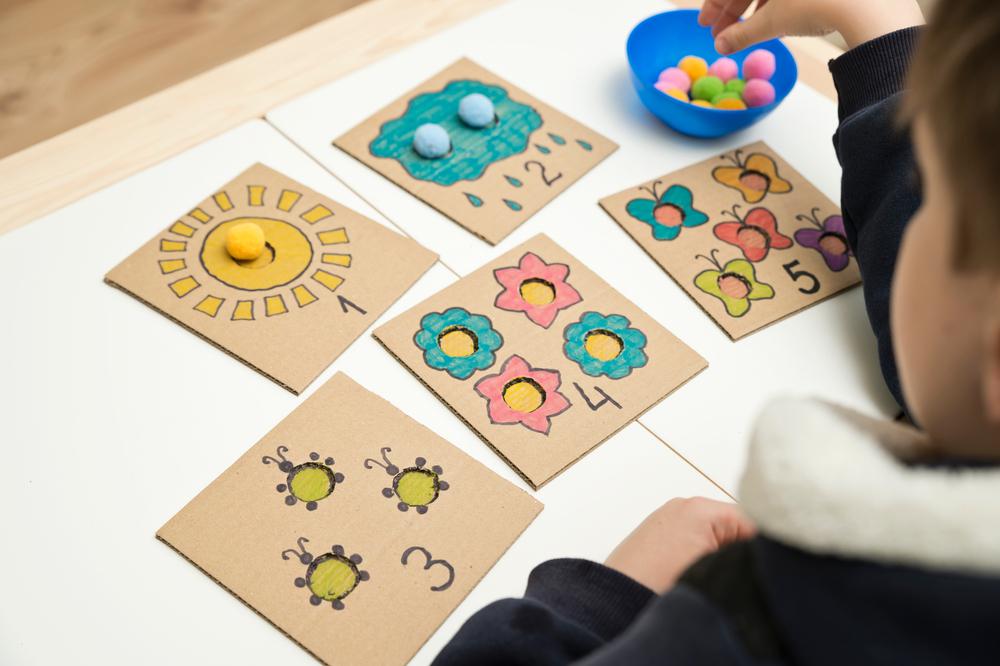Normal Songs and Poems Worksheets Activities With Answers for Ages 4-8
11 filtered results
-
From - To
Discover a delightful assortment of songs and poems worksheets designed specifically for children ages 4-8! Our engaging activities foster early literacy skills while making learning fun and enjoyable. Each worksheet incorporates popular children's songs and enchanting poems, making it easier for young learners to develop language comprehension, rhythm, and phonics. With answer keys provided, educators and parents can effortlessly guide children through the activities, ensuring a smooth learning experience. Explore our collection today to inspire creativity and imagination while building a strong foundational love for reading and music in your little ones. Perfect for classrooms and homeschooling alike!
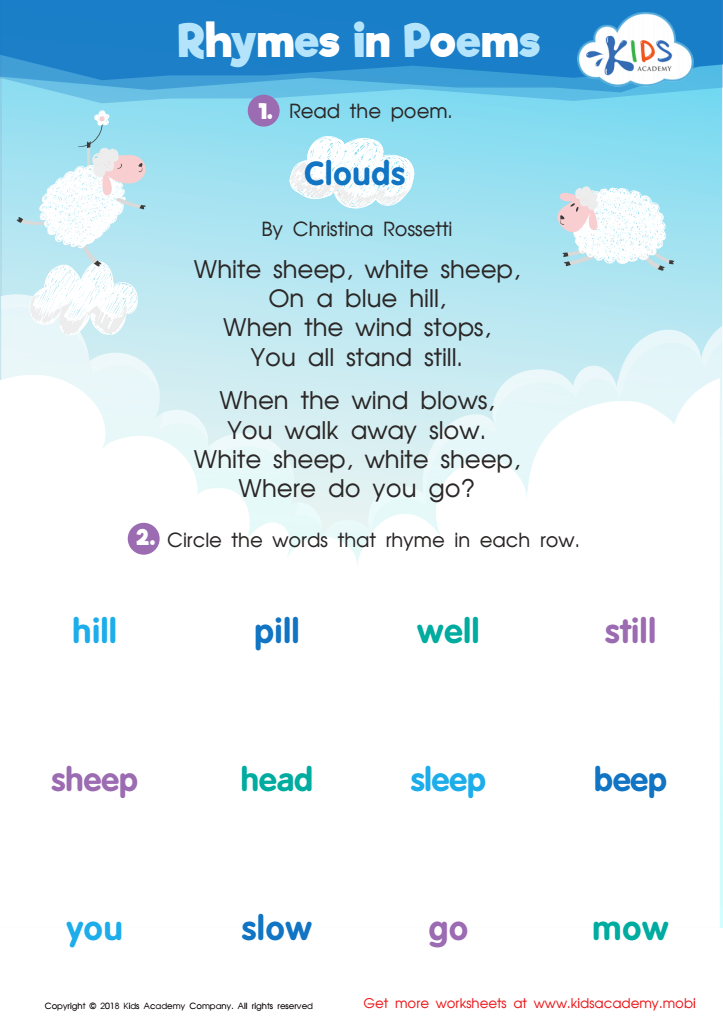

Rhymes in Poems Worksheet
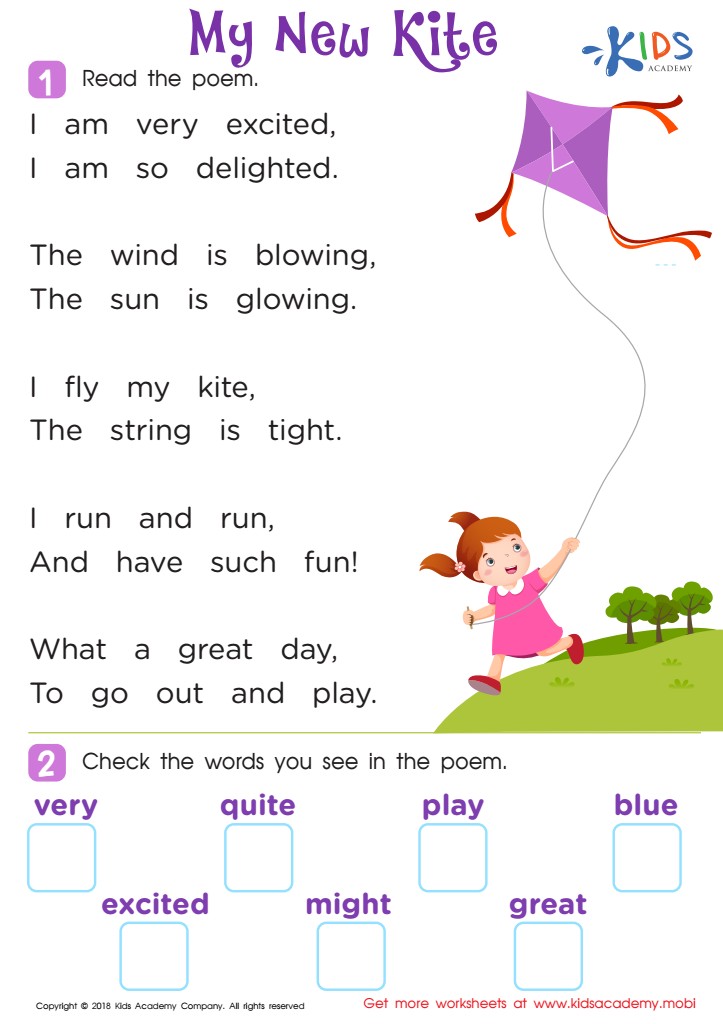

Poem: My New Kite Worksheet
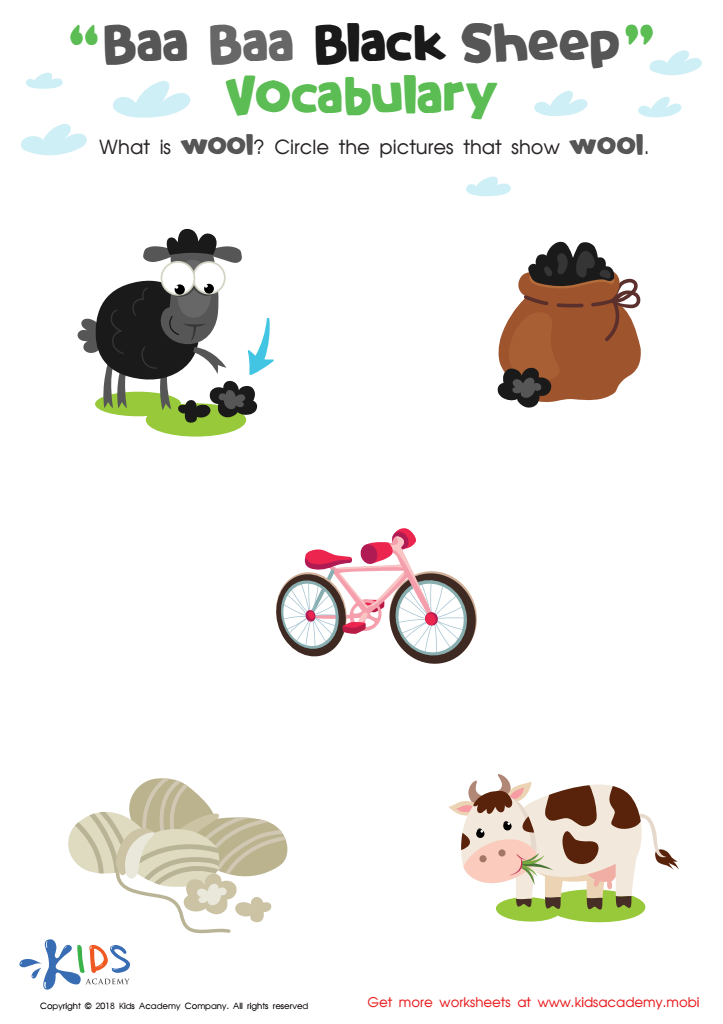

Baa Baa Black Sheep: Vocabulary Worksheet
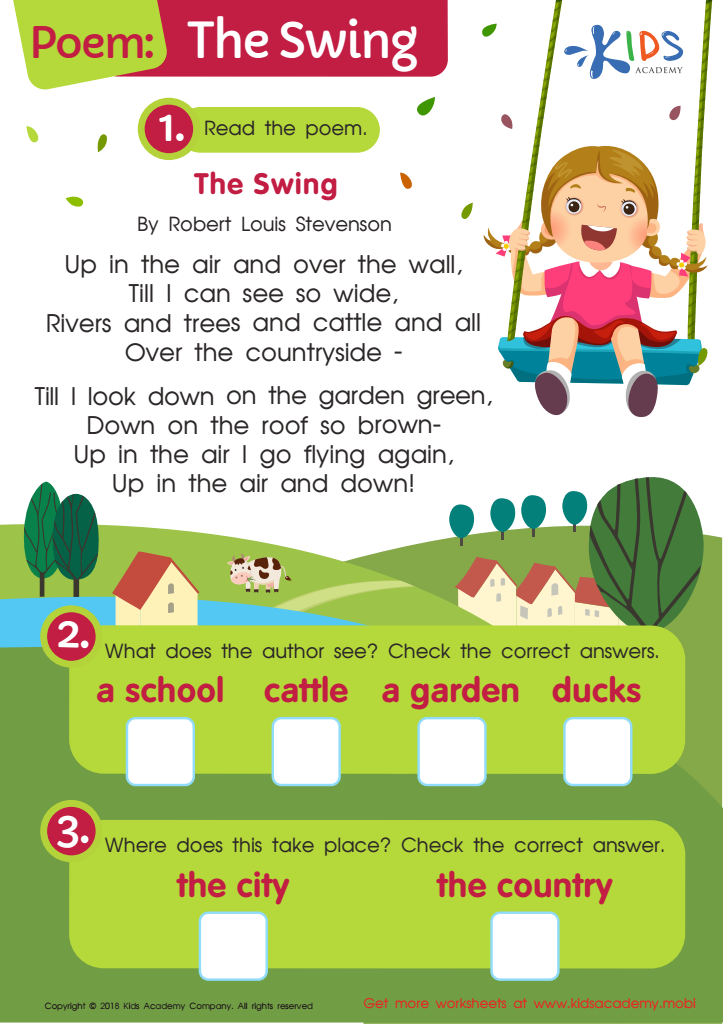

Poem: The Swing Worksheet
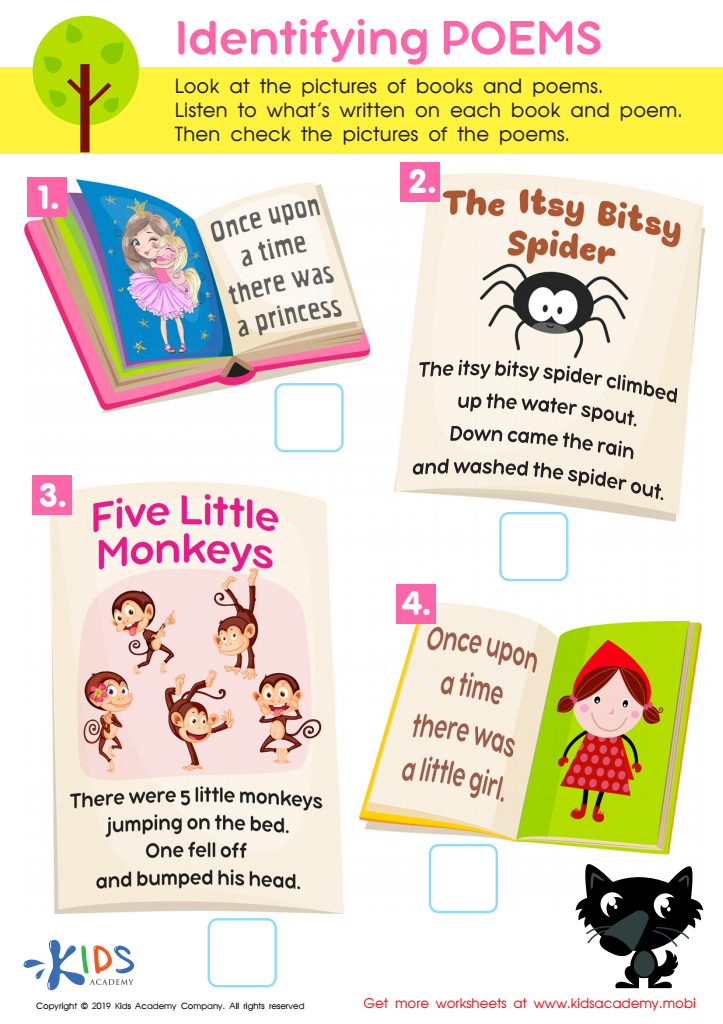

Identifying Poems Worksheet
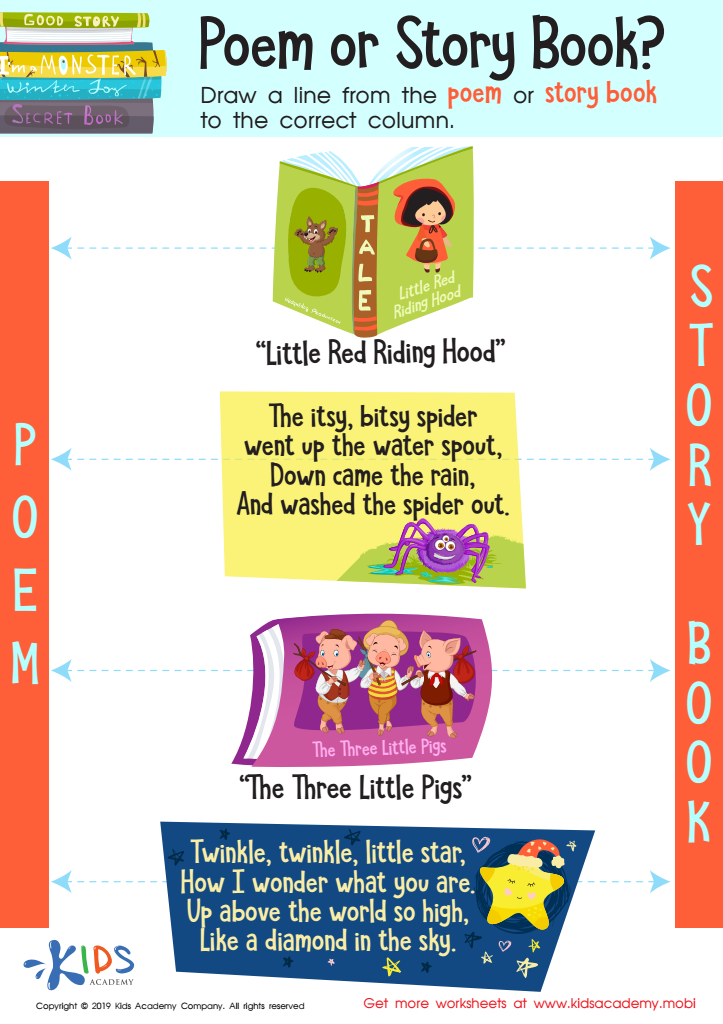

Poem or Story Book? Worksheet
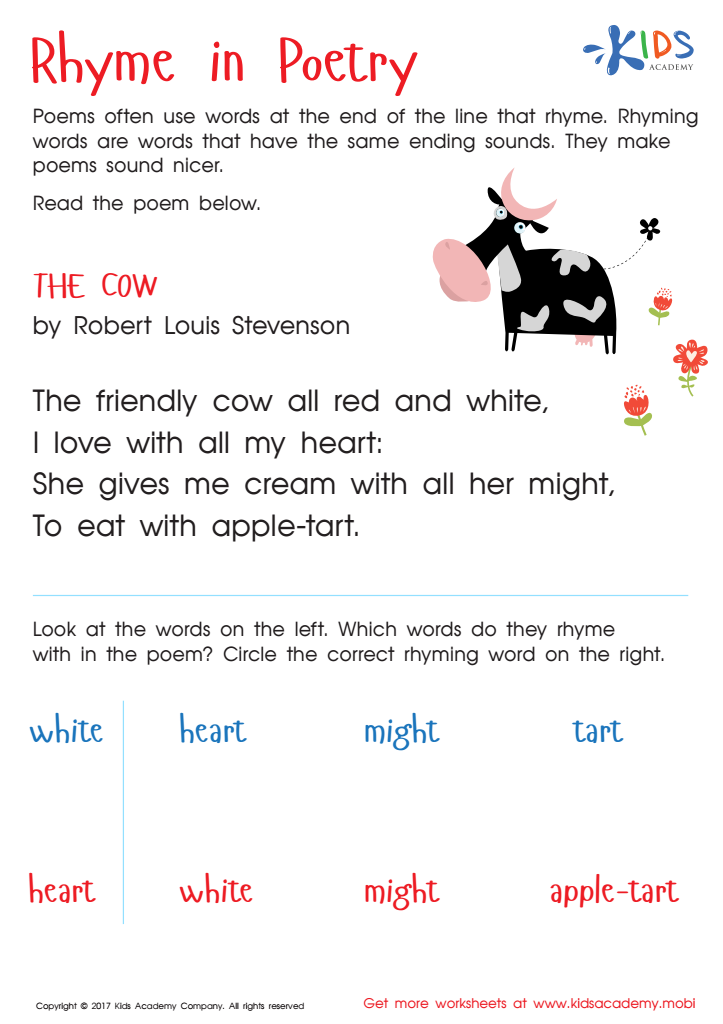

Rhyme In Poetry Worksheet
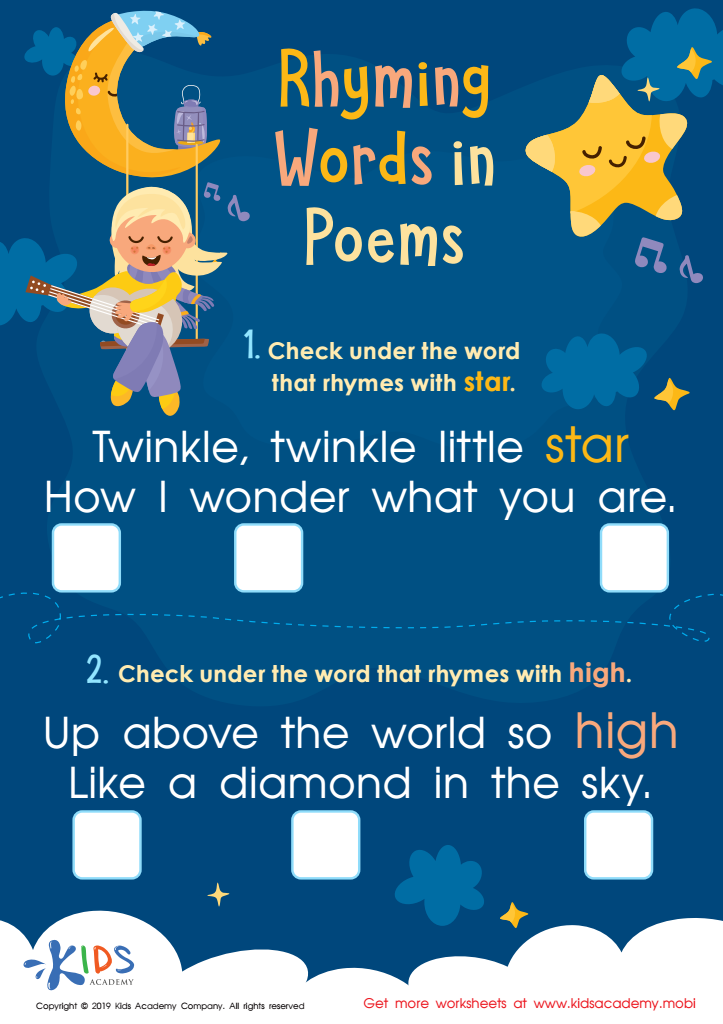

Rhyming Words in Poems Worksheet
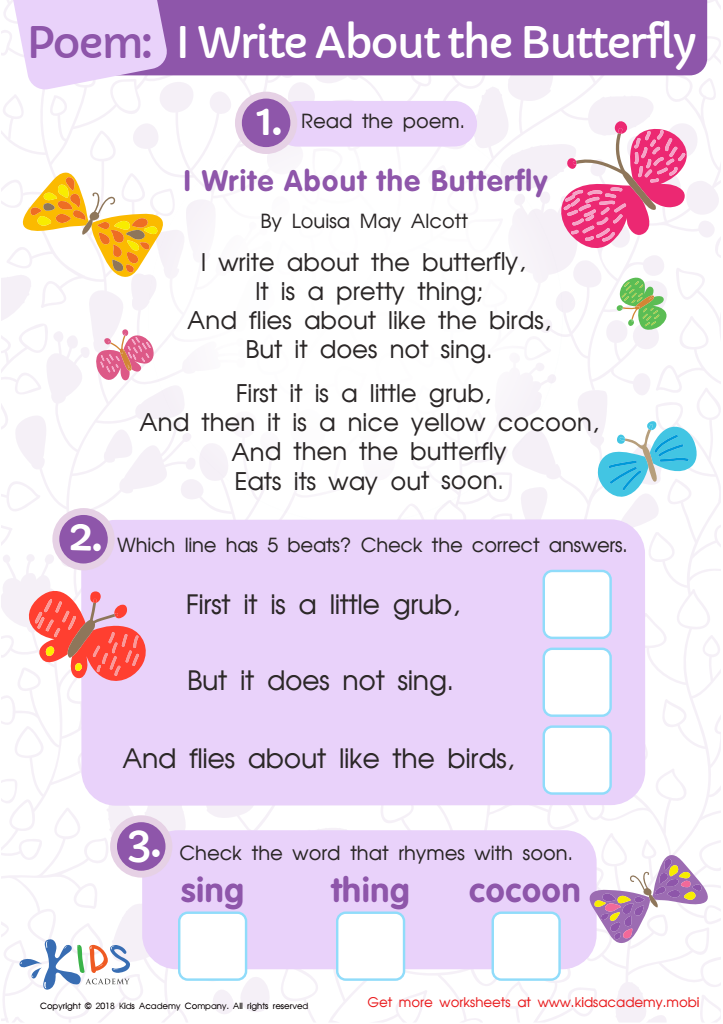

Poem: I Write About The Butterfly Worksheet
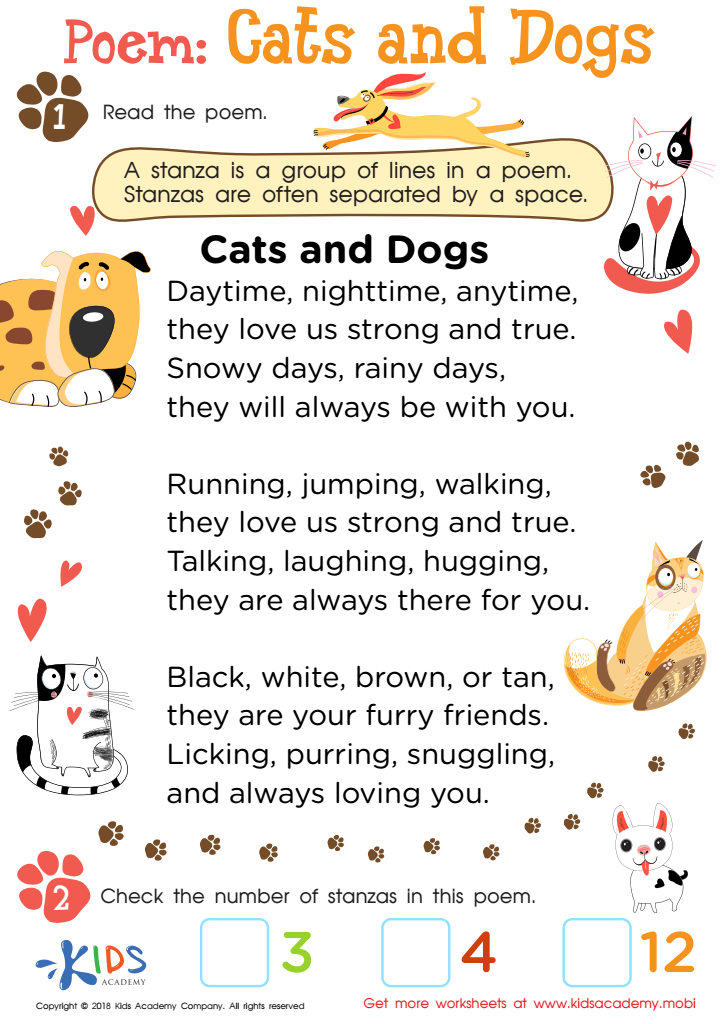

Poem: Cats and Dogs Worksheet
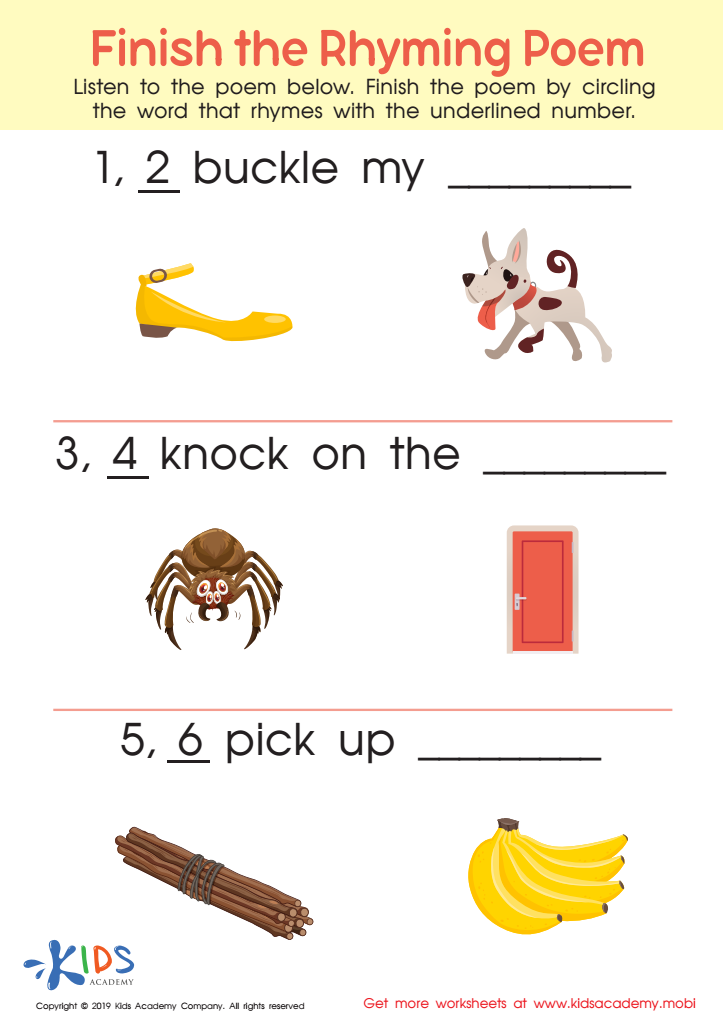

Finish Rhyming Poem Worksheet
Parents and teachers should pay attention to Normal Songs and Poems Activities for children aged 4-8 because these activities play a vital role in early childhood development. Engaging with songs and poems not only nurtures language skills but also enhances cognitive abilities, emotional expression, and social interaction. Children in this age group are naturally curious and absorb information rapidly; musical and rhythmic elements assist in retaining vocabulary and can make learning fun and memorable.
Furthermore, these activities promote creativity, as children explore lyrical themes and can even create their own melodies and verses. This process fosters imagination and self-expression, which are crucial for emotional development. Singing together or reciting poems also helps in building community and connections, allowing children to bond with peers and caregivers while improving their listening and communication skills.
Additionally, rhythm and rhyme encourage pattern recognition, a foundational skill for mathematics and literacy. With guided activities that include answers, parents and teachers can facilitate understanding, ensuring that children grasp concepts effectively. Overall, incorporating Normal Songs and Poems into learning not only enhances educational outcomes but also reinforces a love for language and creativity in young learners.
 Assign to My Students
Assign to My Students


